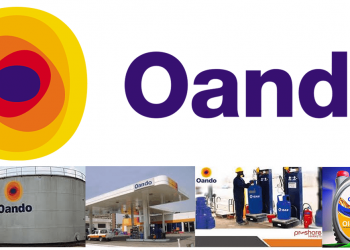The Nigeria Hydrological Services Agency (NiHSA) has raised concern over the contamination of groundwater sources in parts of Kogi and Kebbi States, following assessments that revealed high levels of heavy metals and microbial pollutants.
The director-general of NiHSA, Umar Mohammed, during a media briefing on Thursday in Abuja, said the findings were based on the agency’s groundwater quality assessment conducted across selected locations in Birnin Kebbi, Augie, and Argungu Local Government Areas of Kebbi, as well as in Lokoja Local Government Area of Kogi.
According to him, the analysis revealed that two heavy metals, arsenic and lead, were found in concentrations far above permissible limits, posing serious health risks to residents who depend on the affected water sources.
He said the World Health Organisation (WHO) standard for arsenic in groundwater is 0.001 mg/L, but samples collected from wells in Kebbi showed concentrations ranging from 0.75 to 4 mg/L.
Mr Mohammed explained that exposure to such high levels of arsenic could cause arsenicosis, a medical condition associated with skin diseases, hearing loss, and liver complications.
He added that microbial contaminants were also detected in several samples, with pathogen concentrations reaching 200 CFU/mL, instead of the permissible zero level.
He warned that continued consumption of such contaminated water could result in intestinal infections and possible disease outbreaks in affected communities.
Mr Mohammed further said that lead levels in Kogi were also above acceptable limits, ranging between 0.23 and 0.56 mg/L, compared with the WHO and national water policy limit of 0.01 mg/L.
“Lead is a dangerous contaminant known to cause cognitive impairment and other severe health complications. We recall what happened in Zamfara, where more than 400 children died due to lead poisoning from mining activities,” he said.
He identified arsenic and lead as the two major heavy metals of concern, adding that microbial pathogens such as E. coli, Streptococcus, and Salmonella were also detected in some groundwater sources.
Mr Mohammed said the agency would share its findings with relevant public institutions and health authorities to guide intervention efforts.
He noted that NiHSA has no mandate to penalise any state, local government, or community that fails to comply with its forecasts, stressing that the agency’s role is strictly advisory, to provide focus and guidance.
Mr Mohammed explained that within the national framework, both the Nigerian Meteorological Agency (NiMET) and NiHSA play complementary roles, with NiMET providing weather forecasts, while NiHSA focuses on flood forecasts.
“Both agencies jointly supply critical information, which is then transmitted to the National Emergency Management Agency (NEMA).
“NEMA, in turn, engages with affected communities to provide early warnings, guidance, and solutions. Together, we help people prepare and respond effectively,” he said.
He added that the federal government is working towards developing mechanisms that encourage compliance with forecasts, helping states and communities to act proactively.
“The goal is not to punish non-compliance but to strengthen preparedness through supportive programmes and initiatives,” he said.
Mr Mohammed said NiHSA has deepened stakeholder engagement by identifying the roles of other ministries, departments, and agencies (MDAs) and how they can support and enhance the agency’s work.
“Our collaboration with NiMET, NEMA, NASRDA, and the Federal Ministry of Environment has improved significantly.
“In fact, in the near future, you may see NiHSA and NiMET jointly releasing forecasts on the same day, a development we have been working towards,” he said.
At the regional level, Mr Mohammed said the agency’s experts are currently involved in training and capacity-building activities through existing agreements and collaborations with regional bodies.
“For instance, we successfully completed a pilot project in Sokoto, fully funded by OSS.
“In addition, we are strengthening collaboration with the Lake Chad Basin Commission (LCBC) to improve hydrological charts that support economic development and growth in the region,” he said.
On the international front, he said NiHSA’s partnerships with the World Meteorological Organisation (WMO) and UNESCO have further elevated Nigeria’s profile in hydrological monitoring and technical cooperation.
He stated that ECOWAS had recognised the precision and reliability of NiHSA’s flood forecasts and modelling tools and requested the agency to train other West African countries on flood forecasting and modelling.
“This recognition underscores Nigeria’s growing leadership role in hydrological forecasting and regional capacity development,” he added.
(NAN)







